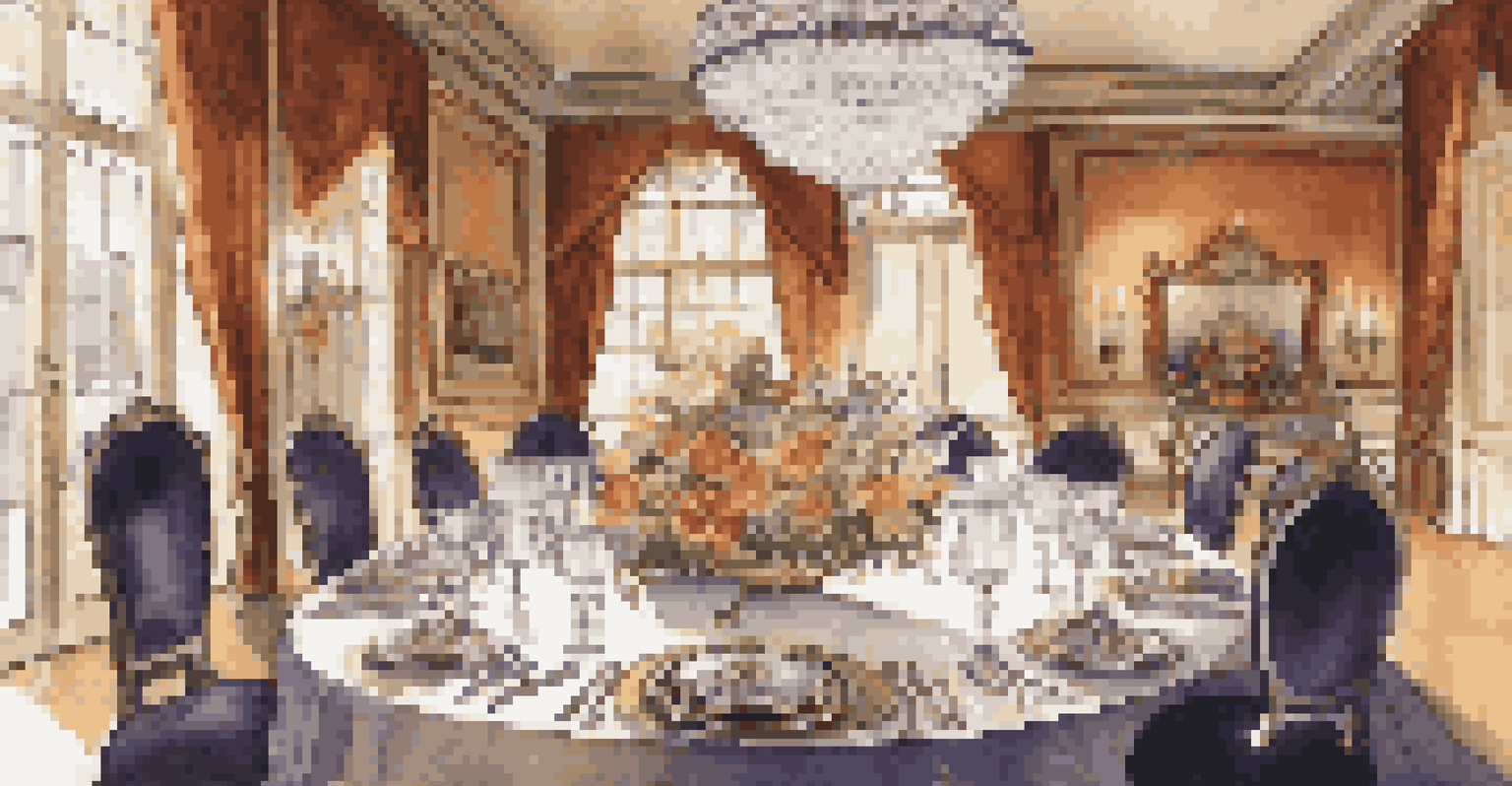The Evolution of Advertising in Luxury Lifestyle Magazines

The Origins of Advertising in Luxury Magazines
Luxury lifestyle magazines first emerged in the late 19th century, catering to affluent readers. These early publications featured elegant illustrations and text that showcased exclusive products, services, and experiences. The goal was simple: to promote a lavish lifestyle and attract high-end consumers with a taste for the finer things in life.
Advertising is only evil when it advertises evil things.
Initially, advertisements were often hand-drawn and lacked the glossy finishes we see today. They conveyed messages through captivating narratives and visuals that resonated with the desires of the wealthy. This organic approach allowed brands to connect with their audience on a deeper level, setting the stage for a unique advertising landscape.
As the readership of these magazines grew, so did the competition among luxury brands. Advertisers began recognizing the potential of these publications to reach a select audience, leading to more sophisticated marketing strategies that would shape the future of luxury advertising.
The Rise of Visual Storytelling
In the mid-20th century, the emphasis on visuals in advertising began to flourish. Luxury magazines started integrating high-quality photography that captured the essence of luxury goods and experiences. This shift from text-heavy ads to visually engaging content marked a significant turning point in how brands communicated their messages.

Photographers like Richard Avedon and Helmut Newton became iconic figures, transforming the aesthetic of advertising. Their work not only highlighted products but also told stories that resonated with readers' aspirations. This visual storytelling helped forge an emotional connection between consumers and brands, making ads feel more like art than mere promotions.
Luxury Ads Evolved with Visuals
The shift from text-heavy to visually engaging content in luxury advertising has transformed how brands connect with consumers.
As a result, luxury magazine advertising became a platform for creativity, where brands could express their identity and vision through stunning imagery. This evolution has continued to this day, with visual elements remaining at the forefront of luxury advertising strategies.
The Influence of Digital Media
With the advent of the internet in the late 20th century, the advertising landscape underwent another major transformation. Luxury lifestyle magazines adapted to the digital age by establishing online platforms that complemented their print editions. This shift allowed advertisers to reach a broader audience while maintaining their luxurious appeal.
The best advertising is done by satisfied customers.
Digital media introduced new possibilities, such as interactive ads and video content that engaged readers in ways print alone could not. Brands began to leverage social media platforms to promote their advertisements, creating a dialogue with consumers and building brand loyalty. This two-way interaction marked a departure from traditional one-way advertising.
However, the challenge was to maintain the exclusivity that luxury brands are known for. Advertisers had to find a balance between accessibility and the allure of luxury, ensuring that their messaging resonated with discerning audiences across various digital channels.
Sustainability and Ethical Branding
In recent years, a growing awareness of sustainability and ethical practices has begun to reshape luxury advertising. Consumers are increasingly seeking brands that align with their values, prompting advertisers to spotlight their commitment to environmental and social responsibility. This shift has led to a refreshing approach in luxury magazine advertising.
Brands are now showcasing their sustainable practices through storytelling that highlights their efforts to reduce waste, source materials responsibly, and support local communities. This not only enhances brand reputation but also appeals to a conscientious consumer base that prioritizes ethical consumption.
Digital Media Redefines Engagement
The rise of digital platforms has allowed luxury brands to reach wider audiences while maintaining their exclusive appeal.
As luxury magazines embrace these narratives, they're not just promoting products; they're contributing to a larger conversation about responsible luxury. This evolution reflects a significant cultural shift, where luxury is defined not just by opulence but also by integrity and purpose.
The Role of Influencers in Luxury Advertising
The rise of social media influencers has revolutionized how luxury brands advertise. These individuals, often seen as relatable and aspirational figures, have become powerful ambassadors for luxury products. Their ability to connect with audiences on a personal level has changed the face of advertising in luxury lifestyle magazines.
Brands are now collaborating with influencers to create authentic content that resonates with their followers. This partnership allows luxury brands to tap into new demographics and cultivate a sense of exclusivity while maintaining an approachable image. It's a delicate balance that many brands are mastering to stay relevant.
As a result, luxury magazine advertisements increasingly feature influencer-driven content, blurring the lines between traditional advertising and organic endorsements. This evolution reflects a modern approach to luxury marketing, where authenticity and relatability are key drivers of consumer engagement.
The Future of Luxury Advertising
Looking ahead, the future of advertising in luxury lifestyle magazines is likely to be shaped by ongoing technological advancements and changing consumer preferences. As virtual reality and augmented reality continue to gain traction, advertisers may explore immersive experiences that allow consumers to engage with products in innovative ways.
Moreover, personalization will play a crucial role in future advertising strategies. Brands may leverage data analytics to tailor their messaging and offerings to individual consumers, creating a more customized experience that resonates with their unique lifestyles and preferences.
Sustainability Drives Brand Values
Increasing consumer demand for ethical practices has led luxury brands to highlight their commitment to sustainability in advertising.
Ultimately, the evolution of luxury advertising is a reflection of broader societal changes. As consumer expectations shift, brands must adapt and innovate to remain relevant in a dynamic marketplace, ensuring that their advertising aligns with the values and aspirations of their audience.
Conclusion: A Journey Through Time
The evolution of advertising in luxury lifestyle magazines is a fascinating journey that mirrors changes in society, technology, and consumer behavior. From its humble beginnings to the sophisticated strategies we see today, luxury advertising has continuously adapted to meet the needs and desires of its audience.
As we reflect on this journey, it becomes clear that successful luxury advertising is not just about showcasing products; it's about telling stories that resonate deeply with consumers. Whether through stunning visuals, authentic influencer partnerships, or a commitment to sustainability, the essence of luxury advertising lies in its ability to connect and inspire.

Moving forward, the fusion of tradition and innovation will define the future of luxury advertising, ensuring that it remains a vital component of luxury lifestyle magazines for years to come.